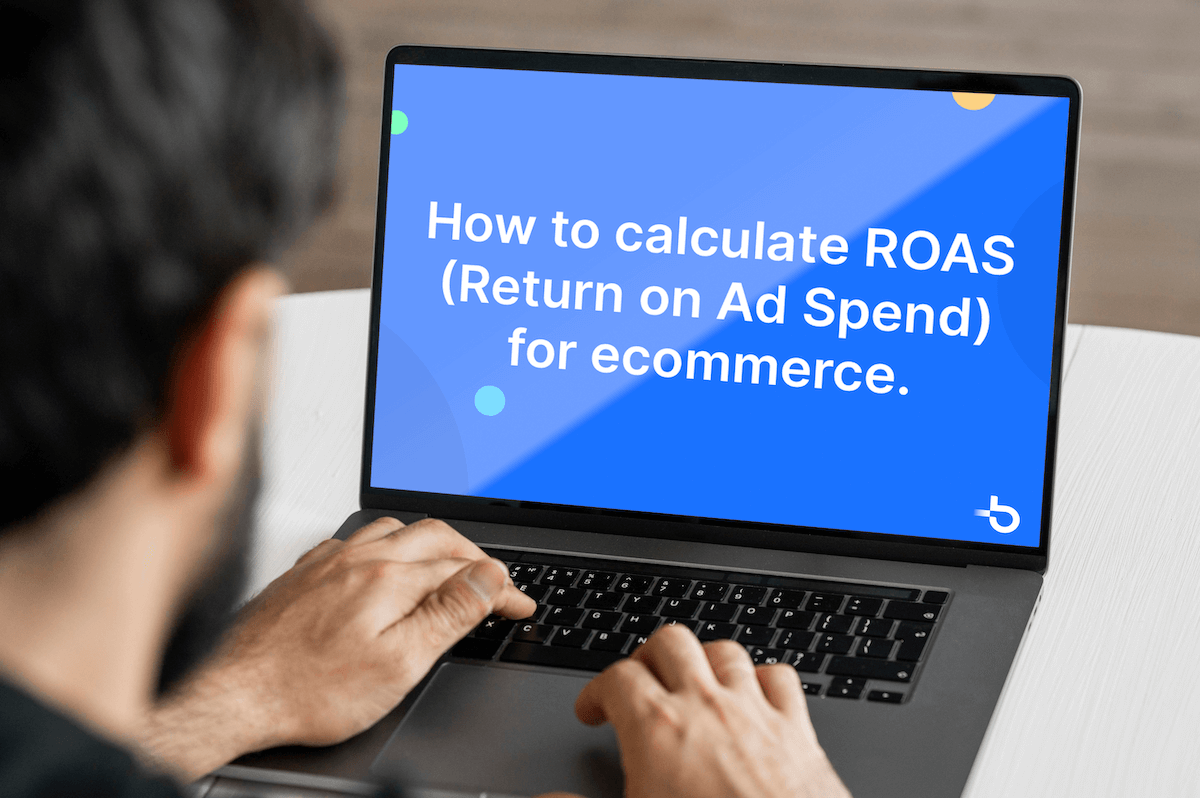How to Calculate Roas (Return on Ad Spend) For Ecommerce.
13 June 2021
As an ecommerce marketer, there are many metrics that you should be tracking. Your ROAS is one of them.
With 77% of marketers stating that they’re going to increase their advertising spend in the next 12 months, it’s safe to say competitors will only become more fierce. Tracking the right metrics and making the proper calculations is what helps give you a competitive advantage.
Google ads, in general, create an 8:1 ROAS. But it’s your ROAS or Return on Ad Spend that gives you a clear idea of the efficacy of your ad campaigns and to what extent those campaigns are profitable.
With a plethora of data at your fingertips, your ROAS is easy to calculate, giving you a clear idea of the ‘bigger picture. Advertisers can then use the formula in other paid marketing campaigns to take a granular look at the extent to which they’re profitable.
This article will take a close but practical look at calculating that ROAS.
You’ll also see:
- How to calculate ROAS for digital marketing campaigns
- What is ROAS
- What is the difference between ROAS and ROI
- What this number indicates about your overall business
- Tracking, reporting, and the limitations of a ROAS.
The ROAS Formula and Calculations
The basic ROAS formula is this:
ROAS = (Total revenue generated from advertisement source) / (Cost of ad source)

Let’s take a look at some actual numbers.
ROAS Calculation Example
If your marketing department spends $1,000 on Google PPC campaigns in one month, and your data shows that Google PPC generates $2000, your return is 200%, or 2:1. For every dollar you put in, you get two out.
The following month, that same $1000 investment in ad spend returned $5000; your return is 500%, or 5:1.
It’s clear that this formula is rather simple; one doesn’t need to be an expert in maths to figure it out. With that being said, constantly calculating your ROAS can be time consuming. To save you the hassle of regular ROAS calculations, we’ve put together a ready-to-use Google Sheet template that you can use as part of your own marketing calculations.
Click here to download your free copy now!
What Is Return on Ad Spend, or ROAS?
Even though you just read how to calculate ROAS, you must know precisely what it means.
ROAS is the revenue a company generates for every dollar it puts into an advertising source. This calculation is used to roughly measure the financial impact those marketing campaigns have on the company’s bottom line.
ROAS also measures the effectiveness of your advertising efforts and indicates the efficacy of your advertising messages. The higher the ROAS, the more the company is profiting from its marketing efforts.
While it does have its flaws, the consensus is that the higher the return is, the more effective your digital advertising campaign.

ROAS is not:
- CAC (Customer acquisition cost)
- ROI (Return on investment)
- CPA/CPL (Cost per acquisition/lead)
While similar and relevant, it’s essential to realise that the above metrics are not the same as your company’s ROAS.
ROI vs ROAS – What’s the Difference?
ROI and ROAS are two very similar creatures – they’re a number that indicates the profit of something.
But they do operate differently and indicate separate things.
ROI is a business-focussed metric that takes expenses, ad costs and other expenditures into consideration alongside the figure you spend on advertisements. ROI deducts your fees and then adds your earnings to that figure.
ROAS, on the other hand, is a tactic that’s specific to an advertiser, measuring the efficacy of a digital marketing campaign. It directly compares the gross revenue of advertising against every dollar spent on it. In other words, it’s an ‘X in, Y out’ comparison used to fine-tune a single process.

ROAS looks specifically at the advertising costs, whereas ROI looks at the overall amount of monetary investment in a process. Return on ad spend is the return that your promotions make. ROI is this figure, with things like salaries, other capital and other expenses taken into account.
In other words, ROAS is specific to your paid advertisements, whereas ROI looks at the figure you invest in advertising in general.
You’ve just read a lot about what ROAS is not, now let’s take a closer look at the finer details of your businesses ROAS.
How Often Should I Calculate My ROAS?
In the world of ecommerce, there’s a very close connection between ROAS and ad spend. Improving your ROAS is often considered a core marketing metric of an ecommerce marketing manager. Furthermore, an organically growing ROAS over time is an indication of effective marketing communication.
You may want to measure and analyse your ROAS month by month, week over week, or even day by day if you’re looking at a specific ad.
Whether you’re advertising through Facebook, Google, Bing or another medium, it won’t be hard to keep track of your ad spend.
But ad spend is only part of the ROAS equation.
Tracking conversions, sales and revenue is the other core part.
Tracking ROAS for Ecommerce
It’s up to you whether you track sales, conversions, conversion rates, total revenue or leads as the other side of the ROAS equation. In most cases, it’s the financial income that’s most important and best suited to the ROAS formula.
That is to say, the ‘return’ in ROAS is measured as the financial return on the financial spend.
However, for many ecommerce companies that are growing and scaling and looking for investors, ROAS can reveal more.
Simply substituting the revenue generated from the advertisement source with the number of leads or traffic from that advertisement source can show you how much those leads or traffic cost you.
Looking at your ROAS like this can help shed more light on other metrics, such as your CAC and ROI.
When it comes to tracking these metrics, familiar tools like Google Analytics are the go-to solution. You’re also able to see how much revenue a specific ad campaign, keyword, ad or ad set generated, giving you an even more accurate look at your ROAS.
What ROAS Is Considered Good?
This is a complicated question to answer, as there’s no real ‘good’ ROAS number. Some numbers are better than others, but there’s no one golden rule. Like most things in business, metrics vary from company to company.
There are a few rules of thumb to follow, though.
An ROAS below 1 means that your advertising is costing you money. Not a good sign. If you constantly spend as much as you make, you’ll never turn a profit.

Generally, an ROAS below 3:1 can indicate that there are probably some more significant problems elsewhere. When considering your ROI with an ROAS of 3:1, you’re probably still losing money when your expenses are considered.
An ROAS of around 4:1 is starting to look healthy, and you’re more than likely breaking a profit when expenses are taken into account. 5:1 is an indication that you’re doing things exceptionally well.
From here, your business may benefit from establishing a minimum threshold of profitability. If, over several months, an ad campaign’s average ROAS is less than x:1, then it’s not worth investing in.
Limitations of ROAS
While it’s critical to know, you can look too deep into your ROAS. Your ROAS is made up of your ad spend and the goals of those digital advertising campaigns. If those goals are something other than a financial value, you may be getting accurate but irrelevant information.
Your ROAS only considers the money spent on advertisements – it doesn’t consider other expenses, such as the cost of creating or souring the product and the price of other marketing strategies.
ROAS may also vary from one medium to the next and even from keyword to keyword. On a marketplace like Amazon, advertising on the keyword ‘phone case’ may be exorbitantly expensive, whereas the keyword ‘plastic-free galaxy s10 case’ may be significantly cheaper. Therefore, when calculating ROAS over two separate keywords be aware that there will be differences.
Ultimately, it’s important to remember that not all advertising channels are easy to measure individually. Breaking it down into mediums on specific channels makes it even harder to track your ROAS.
So, what’s the point of knowing your ROAS at all then?
Why Return on Ad Spend Matters
While not an indicator of business trends, ROAS is a vital metric for marketing teams to measure ad campaign quality.
Firstly, it establishes an excellent benchmark for you to measure future ad expenditure. If your return is 4:1 this month, but 8:1 next month, what changed?
ROAS also gives you the average performance of your ad campaigns in the form of a monetary number. You get a precise number that represents the efficacy of your marketing campaigns.
From here, you can use your ROAS to justify more ad spend and determine valuable and well-performing advertising campaigns to replicate or further improve.
Conclusion
By now, you should have a clear understanding of the following:
- What your ROAS indicates
- How to calculate it
- How it can be used elsewhere in digital marketing campaigns
Calculating ROAS is a relatively straightforward process. The challenge is to reflect the correct data and then use it elsewhere in your digital advertising campaigns to give you the same ‘bigger picture’ view.
Keep your ROAS as high as possible, and your ecommerce brand will be in the best possible position to foster future growth.
